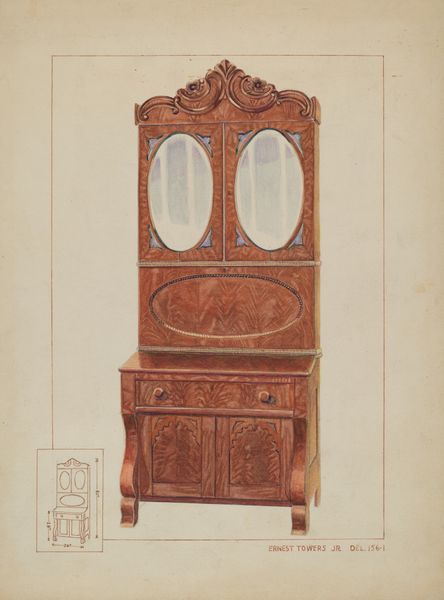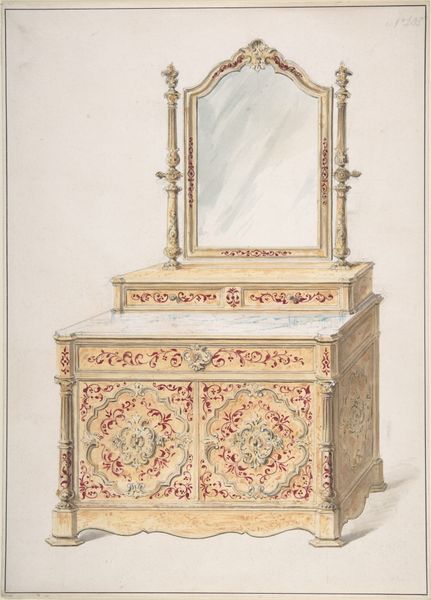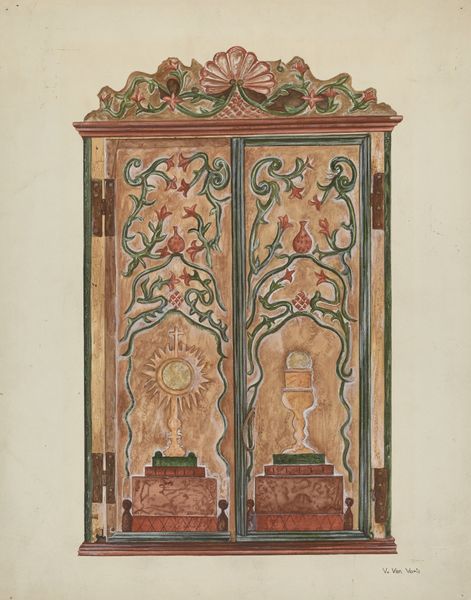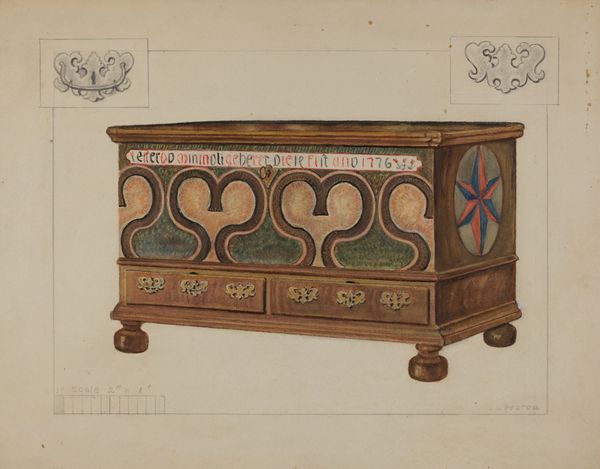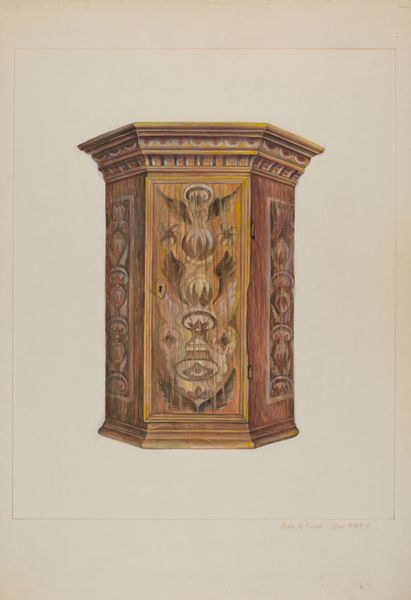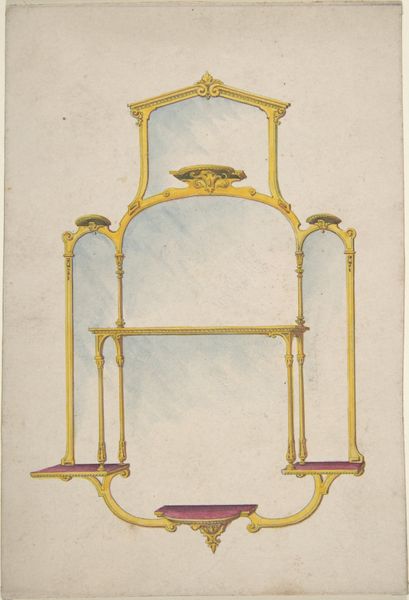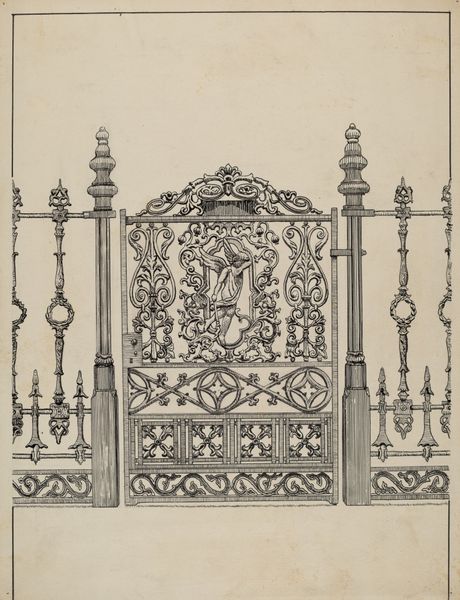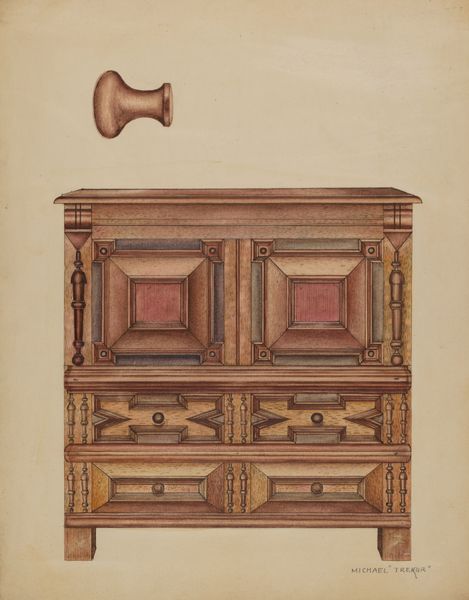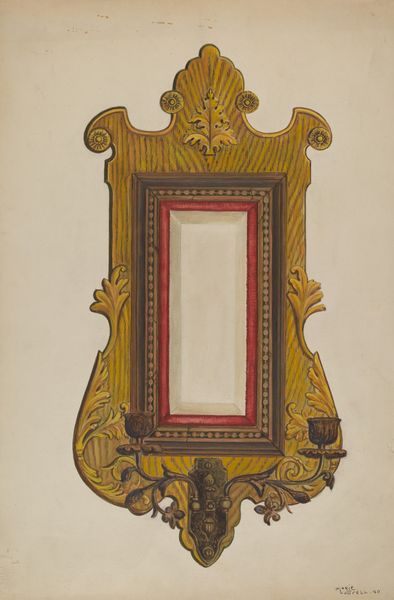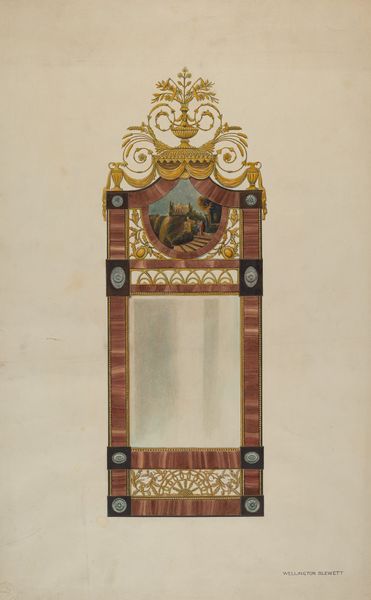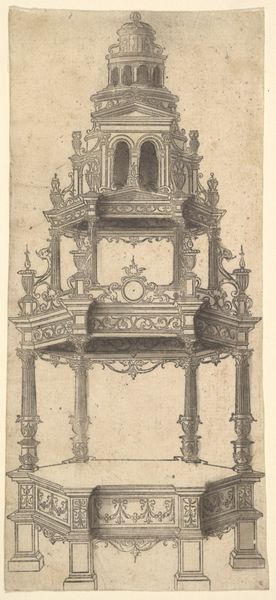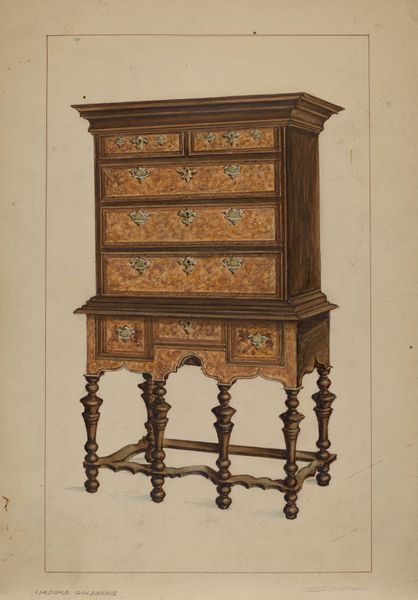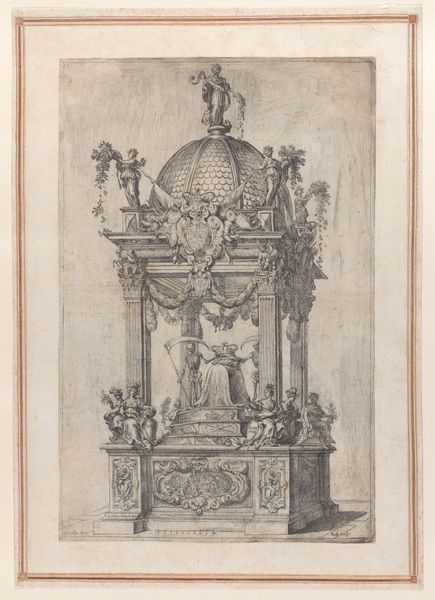
drawing, tempera, painting
#
drawing
#
tempera
#
painting
#
furniture
#
oil painting
#
realism
Dimensions: overall: 66.2 x 49.8 cm (26 1/16 x 19 5/8 in.) Original IAD Object: Head:6'high x 4'3"side. Foot: 32"high x 4'5"wide. See d.s. for dets.
Copyright: National Gallery of Art: CC0 1.0
Curator: What strikes you first about this image of a "Bedstead," a painting and drawing by Florence Truelson around 1937? Editor: Honestly, the sheer opulence of it. It feels almost…burdened by its own grandeur. I wonder about the kind of life lived within and around a piece like that. Curator: Well, look at the details – the eagle perched atop the headboard, a symbol of power and freedom. Beneath that, stylized floral motifs hint at fertility and growth. There’s a real investment in visual language here, constructing not just a bed but a statement. Editor: It screams labor to me. All those carved details – faces, scrolls, leaves... Think of the artisan, maybe even a whole workshop, meticulously shaping each element. And for what purpose? To elevate a place of rest to a symbol of wealth? What materials were used, and how did they source them back then? Curator: Perhaps more than just wealth. A bed is also deeply personal, a space for dreams, for intimacy. These recurring images suggest specific values embedded into domestic life. It could be about asserting one's lineage or moral values. Editor: True, but that craftsmanship comes at a cost, literally and figuratively. Was it sustainable? Who benefitted from that intensive labor, and who was exploited in its production? Those are the stories that often get lost in admiring the surface details. Even in a tempera and oil rendering like this we should remember its context of production and consumption. Curator: That’s fair. It challenges us to reconcile beauty and creation with social and economic realities. Maybe seeing something like this "Bedstead" calls us to reflect on the meaning we assign to objects, what values we see materialized and how to question how they become real. Editor: Exactly! I came in seeing just another "fancy" piece. But analyzing the making, and who was part of that process shifts its relevance, hopefully creating a greater social understanding to see ourselves connected to past.
Comments
No comments
Be the first to comment and join the conversation on the ultimate creative platform.
